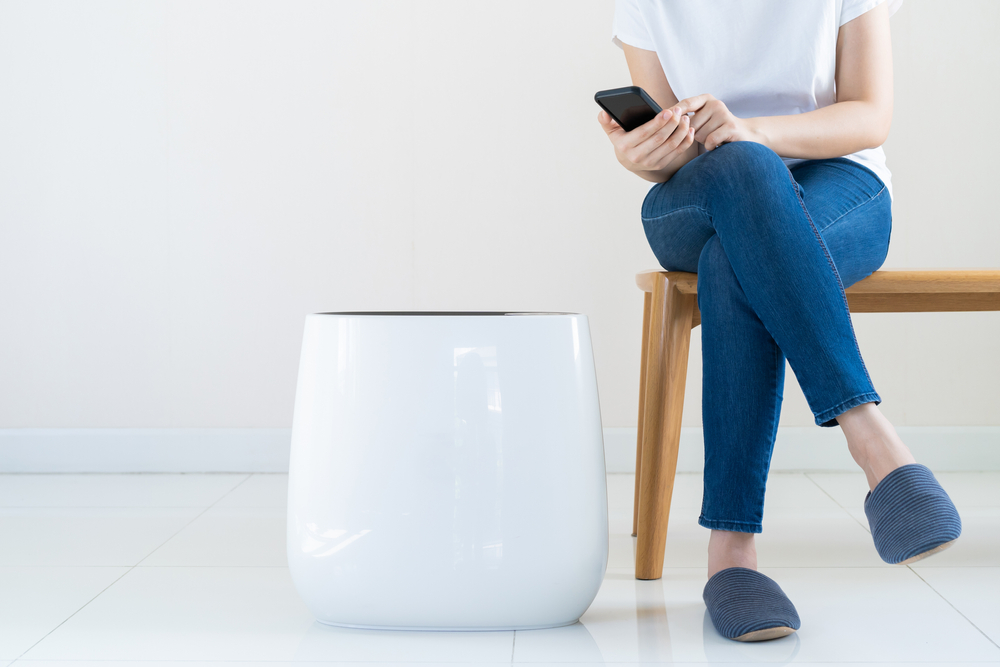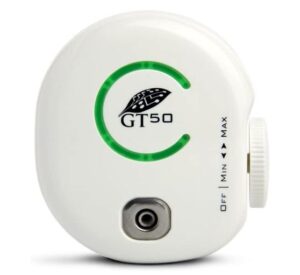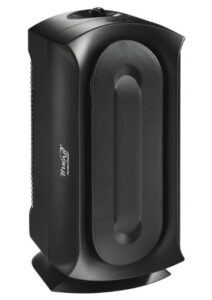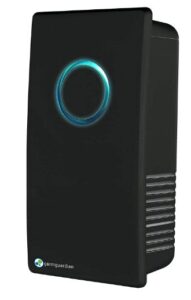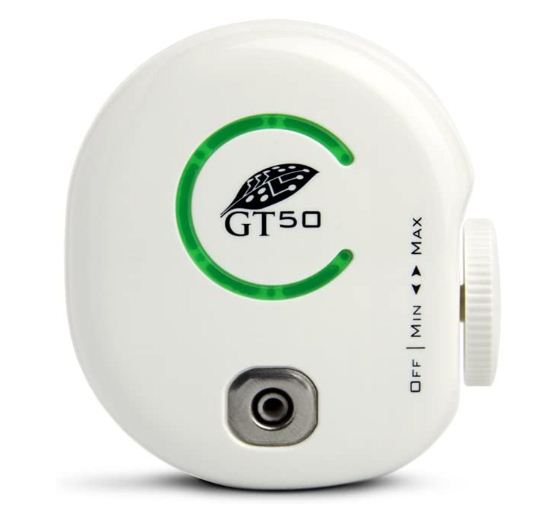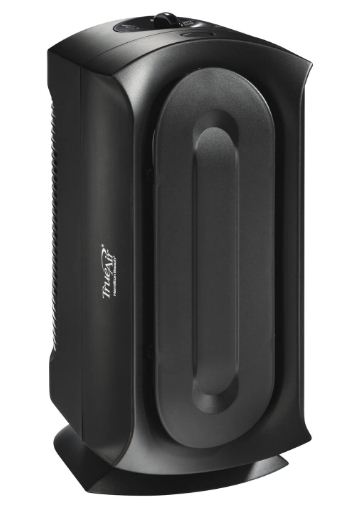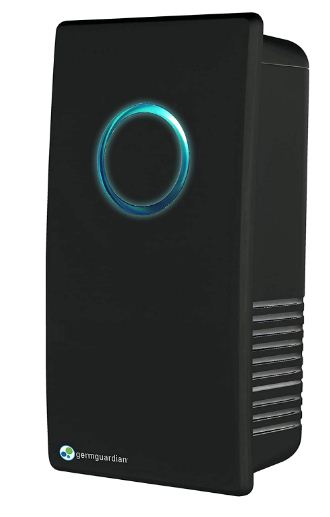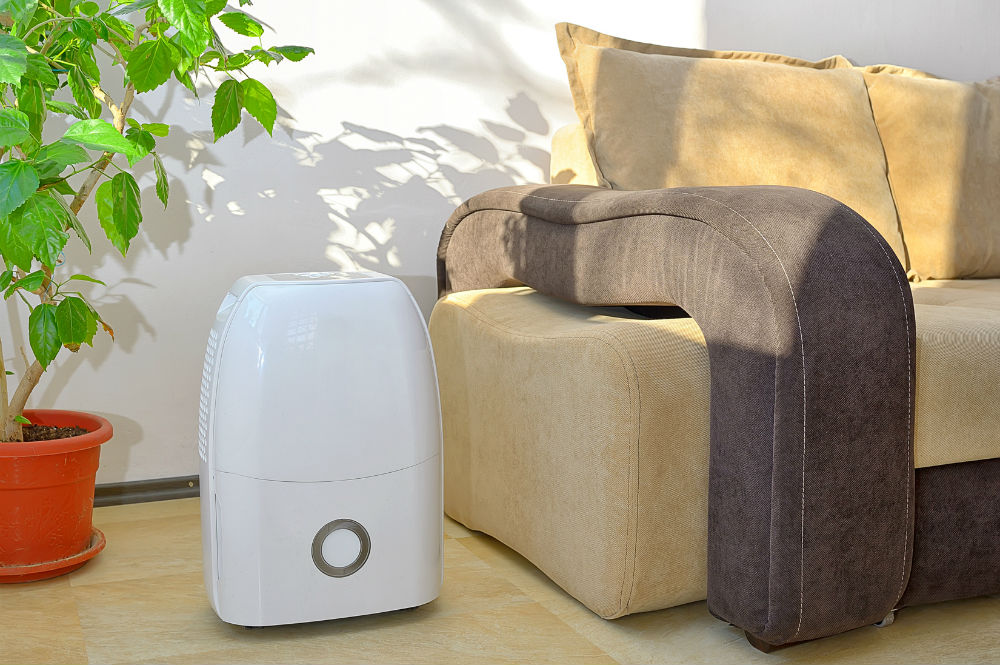Shopping for a wall plug-in air purifier?
You have come to the right place.
Considering the amount of air pollution today, air purifiers have become a necessity for many.
A good air purifier removes harmful contaminants, germs and unwanted odors from your home.
But not every home needs a large whole-house air purifier. They can be noisy, energy-sapping devices.
Which may be why smaller wall plug-in air purifiers are gaining popularity. They are compact, super-affordable and simple to use. Perfect for a single room.
In this guide, you’ll learn everything you need to know about the best wall plug-in air purifiers sold today.
Best Wall Plug-in Air Purifiers
- Uses ionization and activated oxygen to sanitize the air
- Works effectively in areas up to 50 sq. ft
- Saves on energy bills by using just 3W
- Cost-effective, low-maintenance device
- You can use it both horizontally and vertically
- Available at a budget-friendly price
- Uses UV-C light to eliminate contaminants at a molecular level
- You can plug it into any standard electrical outlet
- A low-maintenance device
What's In This Buying Guide
Table of Contents
In this guide, we review and compare the best wall plug-in air purifiers sold today. We’ll start with a list of our top picks for common needs, followed by a comparison table and a review of each product. We also provide a shopping guide and answer the most common questions about plug-in air purifiers.
Best Wall Plug-in Air Purifiers
- Best Professional Grade : GreenTech Environmental GT50
- Best with Permanent Filter: Hamilton Beach TrueAir
- Best for a Kitchen or Bathroom: Germ Guardian GG1100B
Disclaimer: All links below go to Amazon.com
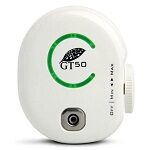
GreenTech Environmental GT50
Category
Best Professional GradeAir Cleaning Technology
Activated Oxygen and IonizationDimensions
5 x 2.5 x 3.5 inchesWeight
5 ouncesCoverage Area
50 sq. ftPower Consumption
3WWarranty
30 days money back guarantee
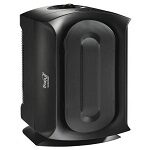
Hamilton Beach TrueAir
Category
Best with Permanent FilterAir Cleaning Technology
HEPA FilterDimensions
8.5 x 6 x 13.54 inchesWeight
5.74 PoundsCoverage Area
160 sq. ftPower Consumption
70WWarranty
1-year warranty

Germ Guardian GG1100B
Category
Best for Kitchen or BathroomAir Cleaning Technology
UV C LightDimensions
2.36 x 3.5 x 6.89 inchesWeight
12 OuncesCoverage Area
225 sq. ftPower Consumption
60WWarranty
1-year warranty
Don’t underestimate this model because of its size. The GT50 is a small yet powerful device that removes harmful pollutants and purifies the air without consuming a lot of power.
PROS
- Simple to set up and easy-to-use
- Effectively removes harmful bacteria and viruses
- One of the quietest devices available
- Adjustable purification levels
- Boasts filter-free operation
CONS
- Not suitable for large spaces
- Expensive
Features
- Uses ionization and activated oxygen to sanitize the air
- Works effectively in areas up to 50 sq. ft
- Saves on energy bills by using just 3W
- Simple and low-maintenance device
- Also removes unwanted odors lingering around the room
Our Review
The GreenTech Environmental GT50 Air Purification System is a pocket-sized air purifier ideal for smaller rooms, cars, and closets. It’s small enough to take it with you while traveling.
The compact GT50 plugs into a standard 115V electrical outlet and requires very little energy to clean the air.
The GreenTech GT50 removes particulates from the air using ionization technology, which is the use of electrical current to generate negative ions that are released into the air and bind with positively charged airborne particles; causing them to become heavier and to fall down.
A secondary use of ionization is odor removal. By releasing activated oxygen that binds with gaseous odor molecules, unwanted odors are eliminated.
The GT50 also features adjustable purification so you can control how fast or slow it operates.
It has a rotating dial on one side to regulate the amount of filtration and ionization being applied.
The best part? The GT50 is friendly to both the environment and your health.
This outstanding air purifier from Hamilton Beach merges high performance with quality air care. It is low-maintenance and removes allergens without needing annual filter replacement – a feature that will save you a lot of money.
PROS
- Simple and very easy-to-use
- Unique design makes it versatile
- Does not make a lot of noise
- Effective for odor removal
- Three different settings to choose from
CONS
- Slightly high-power consumption
- Comes without a filter cleaning indicator
Features
- Cost-effective, low-maintenance device
- You can use it both horizontally and vertically
- Available at a budget-friendly price
- HEPA filter removes air pollutants
- Upgraded 3-stage air cleaning system.
Our Review
True to its name, the TrueAir air purifier is a powerful device that will rid a single room of allergens in no time.
The TrueAir features a three-stage cleaning system consisting of a pre-filter, an activated carbon filter, and a HEPA filter.
The pre-filter captures large particles like dust and pet dander, the carbon filter reacts with odor molecules to trap them, and the HEPA filter sieves out the tiniest particles, resulting in clean and allergen-free air.
Despite its advanced cleaning system, this air purifier is truly affordable, making it a great option for people on a budget.
The TrueAir air purifier uses a permanent HEPA filter, so you won’t have to remove and replace it with a new one every time it gets clogged.
Instead, just vacuum the filter as this saves a lot of money over time.
GermGuardian GG1100B is the perfect choice for a bathroom or a kitchen due to its anti-microbial UV technology and outstanding anti-odor performance.
PROS
- UV-C light destroys disease-causing germs and viruses
- Filterless design eliminates the hassle of filter replacement
- Can also kill mold spores floating in the air
- Affordable price
- Durable and well-built
CONS
- Not suitable for large rooms
- Fan can be a bit noisy for some users
Features
- Uses UV-C light to eliminate contaminants at a molecular level
- You can plug it into any standard electrical outlet
- A low-maintenance device
- Adjustable design fits into small spaces
Our Review
The GG1100B is an excellent air purifier with a unique, stylish and compact design that will match any modern decor.
This GermGuardian air purifier uses UV-C light technology to kill harmful disease-causing viruses and bacteria.
Once you plug it in, it immediately starts to eliminate pollutants from the air and rids your home of lingering smells coming from the kitchen or toilet.
Although it is designed to work in small spaces, if you place it near an air source, the machine will work in large rooms as well.
The GG1100B is easy-to-use. It comes pre-assembled and plugs into any standard electrical outlet.
The only gotcha is its height, at 7-inches. That said, the design is quite stylish so you don’t really need to hide this one.
Wall Plug-In Air Purifier Buying Guide
How do Wall plug-In Air Purifiers work?
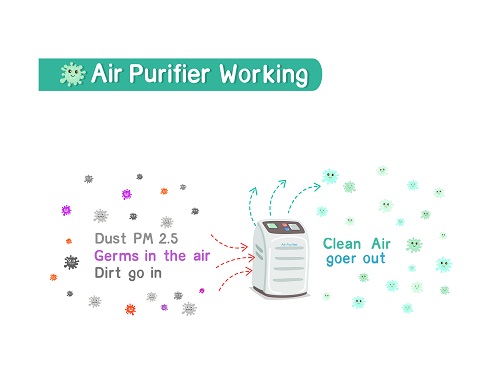
Just like their full-sized counterparts, portable wall plug-in air purifiers also employ numerous technologies to work and clean the air around you.
Different models use different types of air cleaning technologies like HEPA filters, ionization technology, carbon filters, and UV-C light to eliminate air pollutants like dust; mold spores, liquid and gaseous particles, pollen, germs, etc. Below is a detailed explanation of how each type works.
HEPA Filters
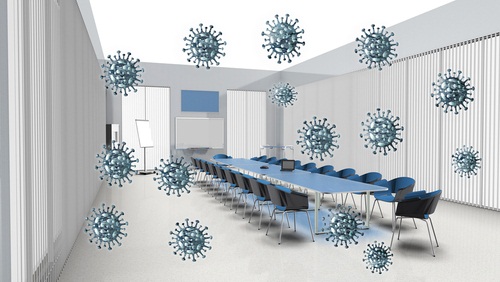
Units with HEPA filters sift the air to remove the smallest particles. They can effectively remove allergens as small as 0.3 microns, including dust, pet dander pollen, and bacteria.
Ionizers
Ionic wall plug-in air purifiers employ ionization technology to improve air quality. They use high voltage to negatively charge the particles and release them into the air, where they bond with the positively charged airborne matter.
These bonded molecules are too heavy to remain airborne.So, they fall down to the floor, decreasing your chance of inhaling them. Some units also have collector plates to attract the bonded molecules back inside the machine, where they stick to the collector plates instead of dropping on the ground and different surfaces.
Carbon Filters
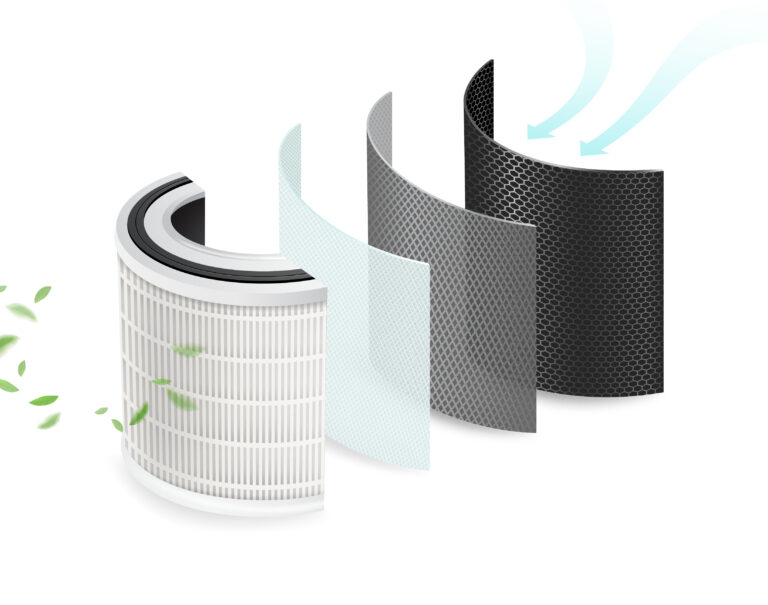
Carbon filters work to eliminate odor. They contain a high concentration of activated carbon that attracts and binds with odor-causing gaseous molecules, capturing them to remove lingering odors.
UV-C Light
Wall plug-in air purifiers with UV-C lights contain UV lamps that emit short-wave ultraviolet light. These invisible light rays inactivate airborne microorganisms and pathogens through a process called germicidal irradiation.
Who Should Buy a Wall Plug-In Air Purifiers?
Wall plug-in air purifiers are small, compact units designed to clean one room. As such, a wall plug-in air purifier is most suitable for the following uses:
Pet Owners
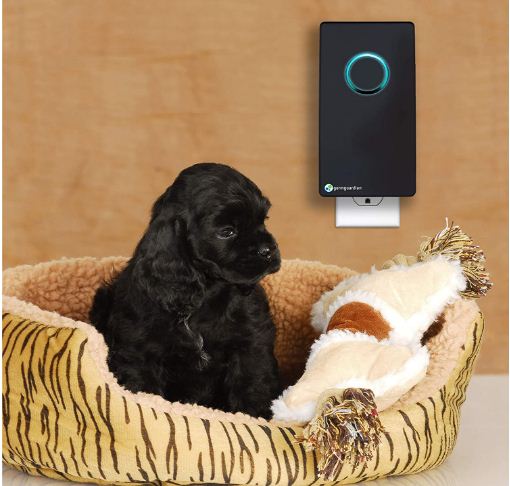
Pet skin, feathers, and hair greatly contribute to poor quality air. In addition, there are those nasty odors.
A plug-in air purifier is the perfect solution for isolating and cleaning pet allergens and smells from your home. To do this, install a wall plug-in air purifier beside your pet’s cage to remove pet dander, or near the litter box or cage to eliminate odors.
Smokers
Smoking endangers the health of every person living with smoke in a home.
Using a wall plug-in air purifier near a smoker’s favorite chair or most common smoking location will help save others from the risk of secondary smoke.
Parents of Small Children
Parents of any small child should think about installing a wall plug-in air purifier in their kids’ room. Not only will it isolate and trap odors, if your toddlers are prone to allergies it will help them sleep better at night.
Persons Suffering from Respiratory Issues
Respiratory disorders like allergies and asthma can be triggered by allergens circulating in your home’s air. Keeping the doors and windows closed will help keep them out, but there are many allergens such as dust mites and toxic chemicals that are found solely indoors.
Allergens such as pollen; dust, smoke, dust mites and mold can trigger an asthma attack.
Placing a plug-in wall air purifier in the bedrooms of allergy sufferers can greatly improve the quality of their sleep and prevent allergic symptoms.
What to Look for in a Wall plug-in Air Purifier
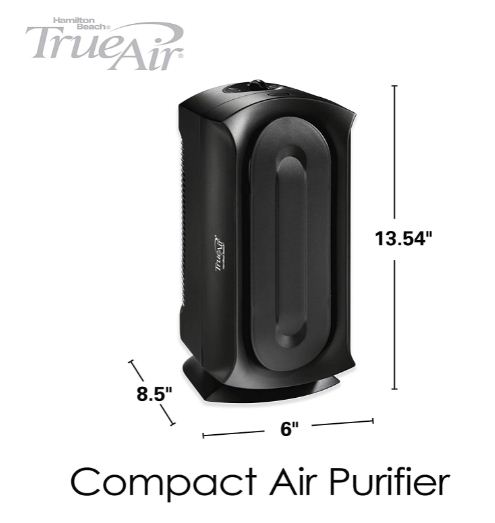
To choose the best wall plug-in air purifier for your particular situation, consider the following key features, conditions and issues:
Coverage Area
One of the most important considerations for an air purifier is its coverage area. Since portable air purifiers are designed for personal use, their fans and filters aren’t designed to process as much air per hour as larger units. Plug-in units are designed to clean a single room at a time.
Most wall plug-in air purifiers can cover up to 400 sq. ft, about the size of a large master bedroom. If your room is larger, then consider upgrading to a larger HEPA air purifier.
Air Filtration Technology
The filtration performance of a plug-in air purifier depends on the type of cleaning technology it uses.
Most wall plug-in units only use one type of filtration system, so you’ll need to choose carefully.
For example, plug-in air purifiers with HEPA filters can remove up to 99.97% of airborne pollutants down to 0.3 microns in size; carbon filters are more effective for eliminating odors. UV-C light models are best at destroying germs and bacteria, and ionizers are especially effective at trapping particulate matter such as smoke.
You need to consider the type of pollutants you want to remove – and choose accordingly.
Durability
Since air purifiers are designed to be used for long periods of time, a durable high-quality construction is important.
Buy only from proven, reputable manufacturers. Select units that have been on the market for several years and therefore have longer-term reviews – and check the warranty as proof of durability.
Filter Life

Not all wall plug-in air purifiers use fixed filters. But those that do may require filter replacement once they are full.
Washable/permanent filter and HEPA filters are the most common type of wall plug-in air purifier.
Washable filters are great because once they are full, you just wash and reinstall.
HEPA filters trap the most contaminants, but the filters only last 4-12 months and can be expensive to replace.
So, consider your budget and attitude towards cleaning air filters – and choose accordingly.
Running Cost
The running costs of air purifiers vary greatly from model to model.
The more power an air purifier consumes and the more frequently its filters need replacing, the higher its running cost will be.
Some pure HEPA units are very energy-efficient and consume as little as 3W, while others that use ionization and/or UV light technology can consume as much as 70 W.
If you want to keep your running costs low, buy a model with low power consumption and one with a permanent/washable filter that does not need to be replaced.
Limitations
To remain compact and affordable, plug-in air purifiers share common limitations and shortcomings when compared to more expensive units including the following:
Single Room Only
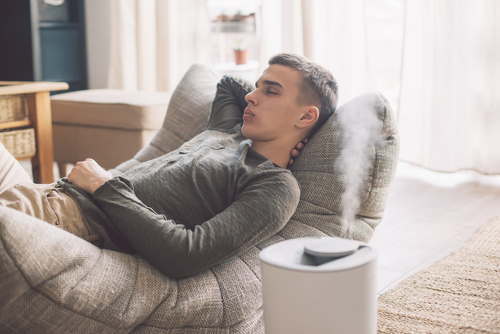
You are wasting money if you don’t properly match the capacity of your air purifier with the size of the room you want to clean.
Plug-in air purifiers are compact, so obviously the components are smaller in size. Because of this, their air flow capacity is far less than more expensive whole-house units.
While wall plug-in purifiers work just fine in smaller rooms like bathrooms; kitchens, home offices and hotel rooms, they are not suitable for larger spaces like living rooms, open-plan living areas and conference halls.
One Filtration Technology
While larger air purifiers often combine several air-cleaning techniques into one device, their wall plug-in cousins are usually limited to one.
Some are equipped with a HEPA filter, others with ionizers, and others use UV-C light. While there are some exceptions, typically you’ll be limited to just one type of air-purifying technology.
Cleaning and Maintenance
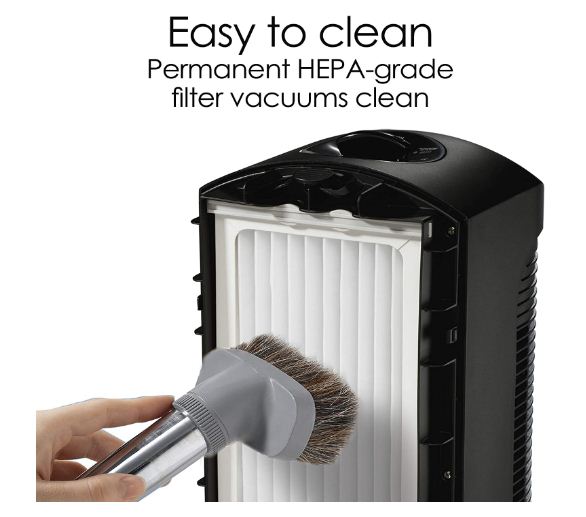
Because they are smaller and often get clogged faster, wall plug-in air purifiers often need more frequent cleaning and attention than their larger-room counterparts.
Read the Instructions Carefully
While operating your plug-in air purifier is normally extremely simple, we recommend you read the manufacturer’s instructions carefully for the various dos and don’ts of keeping your device safe and fully functional.
Each type of filtration technology has its own gotchas – so read your manual carefully to avoid having to replace your unit in a year.
Choose the Right Location
Just like any other air purifier, you need to place a portable air purifier properly.
Find a location with good airflow, like by the door or by a window. Make sure nothing obstructs the inbound airflow such as a curtain or a towel.
Obviously, you want to locate your air purifier in a room where you spend most of your time.
Finally, try to keep your door closed when operating the unit so new pollutants from other rooms do not enter.
Clean it Regularly
Regular cleaning of filter media is important for all types of air purifiers.
How to clean your unit will depend on the air purifying technology your device uses.
For example, HEPA filters will need to be replaced at least every year, often every few months to keep the device operational.
Ionizers collect dust on the emitter and collector plates, so you will need to wash the collector plates and clean the emitter regularly.
Keep it Running
The key to maintaining good air quality is to keep your portable air purifier running at all times.
If you don’t like the noise, you can run it on high when you are away and place it on low setting when you return. Keeping the windows closed will also boost its performance.
Frequently Asked Questions
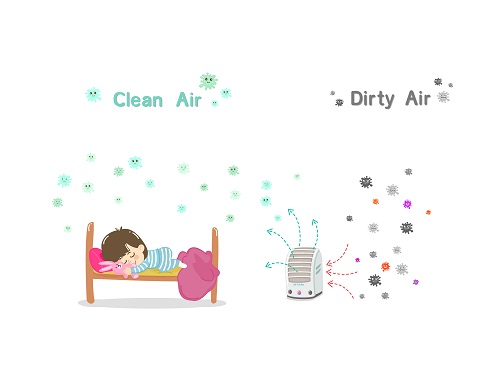
Are plug-in Ionizers worth it?
Plug-in ionizers are highly compact, energy-efficient, and inexpensive.
They are great at removing odors and purifying the air of smaller areas in your home like laundry rooms; kitchens, bathrooms, bedrooms, home offices and areas where your pet lives.
Can you get sick from an air purifier?
No, just the opposite. An air purifier cannot make you sick because it purifies the air.
Its job is to remove hazardous airborne particles like dust and bacteria that can make you fall sick.
Air purifiers also clean the air without drying it, so they won’t exacerbate symptoms associated with dry air.
That said, some ionic air purifiers can cause throat irritation in people with respiratory issues. Other than that, they are extremely safe to use.
Is it safe if we run an air purifier for 24-hours?
Running an air purifier for 24-hours is not a problem, and experts actually recommend it.
Once you turn off the device after the suggested air quality is reached, clean air will become contaminated again within 3-4 hours. The air quality will continue to decrease unless you turn your unit back on.
So, if you want to maintain superior air quality in your room, run your air purifier 24-hours a day so that new contaminants are removed as soon as they are introduced.
How much power do air purifiers need?
Most air purifiers are quite energy-efficient and don’t consume a lot of power.
To put it into perspective, running an air purifier draws about as much energy as an iPhone charger.
At most, they use about as much energy as one bright (70W) light bulb.
Final Verdict: What is the Best Wall Plug-In Air Purifier Sold Today?
After reviewing dozens of portable air purifiers, we believe the Hamilton Beach TrueAir Air Purifier is the best choice for most people. The TrueAir is affordable and comes with a unique advanced three-stage cleaning system to provide clean and fresh air for one room 24/7.
Coming in second is the GermGuardian GG1100B. It is easy-to-use and maintain, making it a great budget choice for many.
The GreenTech Environmental GT50 Air Purification System is another great option for its professional performance and low energy consumption.
I’m a degreed ME (mechanical engineer) who is passionate about machines of all kinds. I created MachineWonders.com as a way to connect with others who love machines like me – or need help choosing one for their needs, application, or situation.

